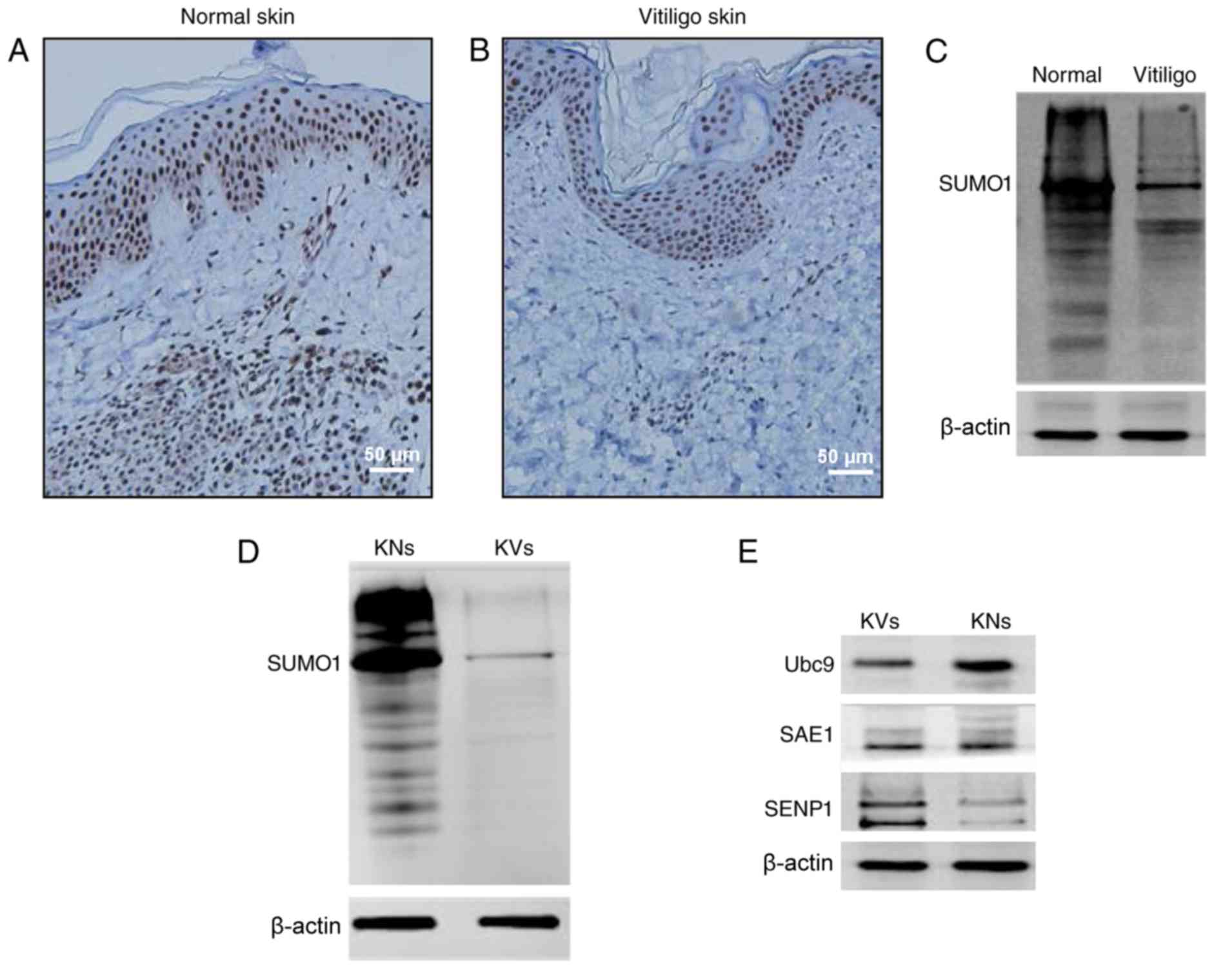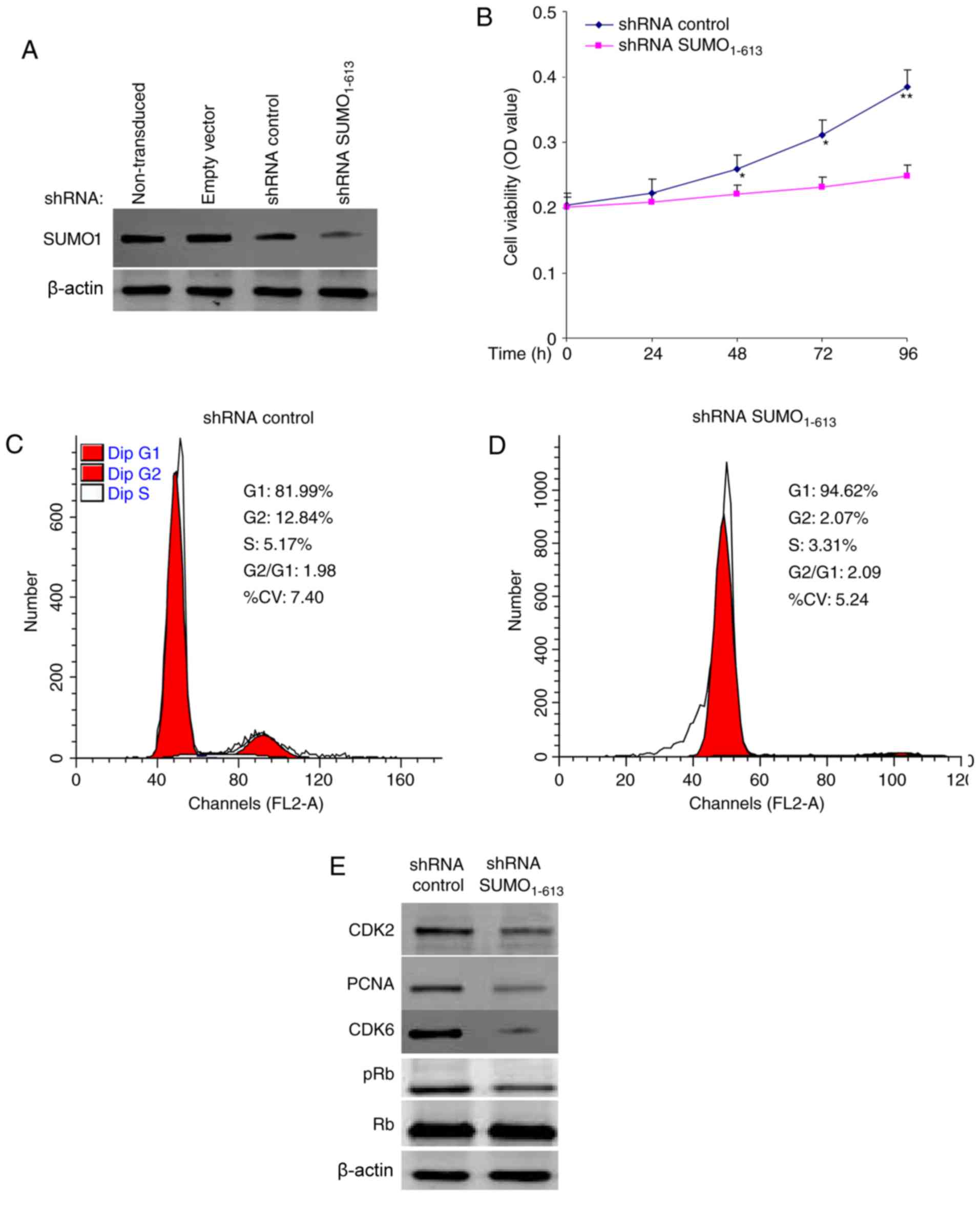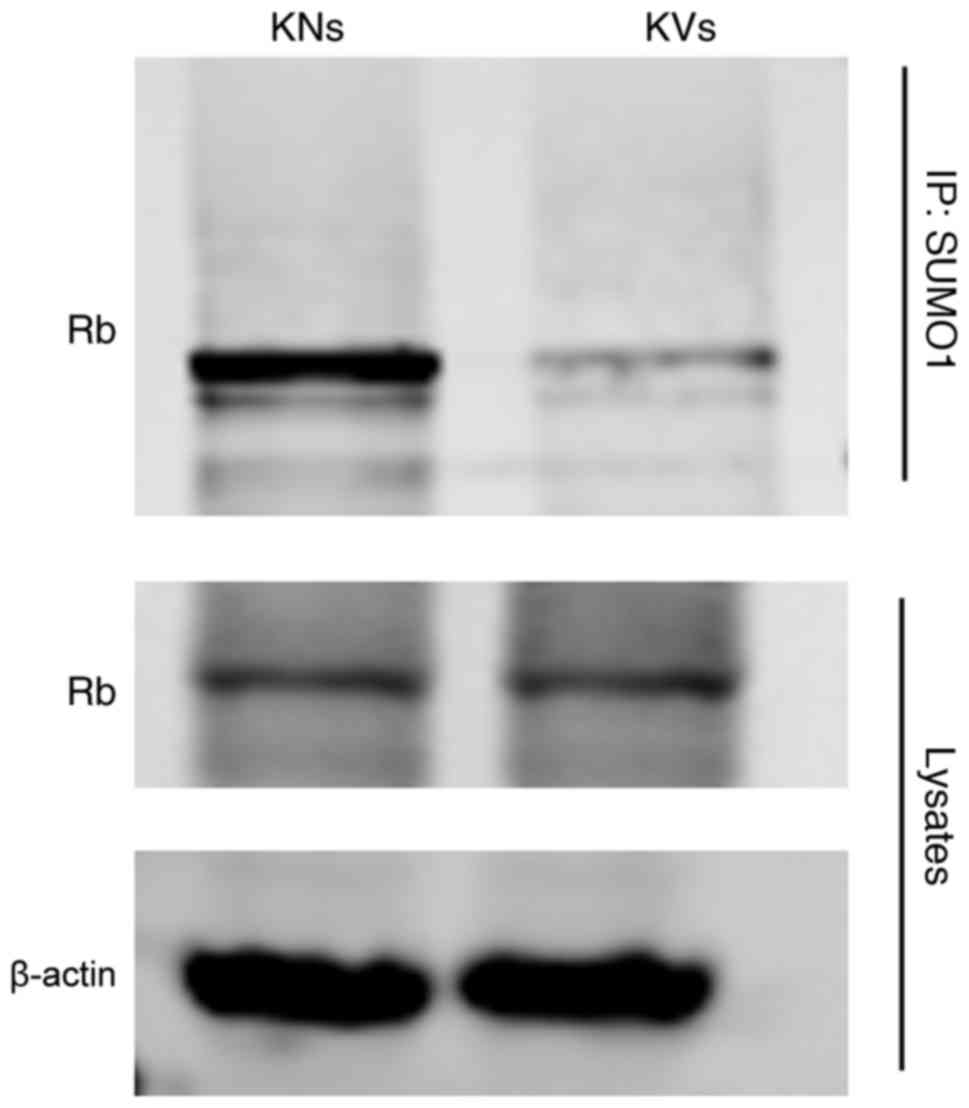|
1
|
Lazzeri L, Colucci R, Cammi A, Dragoni F
and Moretti S: Adult onset vitiligo: Multivariate analysis suggests
the need for a thyroid screening. Biomed Res Int. 2016:80657652016.
View Article : Google Scholar : PubMed/NCBI
|
|
2
|
Lee AY: Role of keratinocytes in the
development of vitiligo. Ann Dermatol. 24:115–125. 2012. View Article : Google Scholar : PubMed/NCBI
|
|
3
|
Hirobe T: Keratinocytes regulate the
function of melanocytes. Dermatologica Sinica. 32:200–204. 2014.
View Article : Google Scholar
|
|
4
|
Shin YH, Seo YK, Yoon HH, Song KY and Park
JK: Effect of keratinocytes on regulation of melanogenesis in
culture of melanocytes. Biotech Bioproc Eng. 17:203–210. 2012.
View Article : Google Scholar
|
|
5
|
Prignano F, Pescitelli L, Becatti M, Di
Gennaro P, Fiorillo C, Taddei N and Lotti T: Ultrastructural and
functional alterations of mitochondria in perilesional vitiligo
skin. J Dermatol Sci. 54:157–167. 2009. View Article : Google Scholar : PubMed/NCBI
|
|
6
|
Lee AY, Kim NH, Choi WI and Youm YH: Less
keratinocyte-derived factors related to more keratinocyte apoptosis
in depigmented than normally pigmented suction-blistered epidermis
may cause passive melanocyte death in vitiligo. J Invest Dermatol.
124:976–983. 2005. View Article : Google Scholar : PubMed/NCBI
|
|
7
|
Raman N, Nayak A and Muller S: The SUMO
system: A master organizer of nuclear protein assemblies.
Chromosoma. 122:475–485. 2013. View Article : Google Scholar : PubMed/NCBI
|
|
8
|
Schimmel J, Eifler K, Sigurðsson JO,
Cuijpers SA, Hendriks IA, Verlaan-de Vries M, Kelstrup CD,
Francavilla C, Medema RH, Olsen JV and Vertegaal AC: Uncovering
SUMOylation dynamics during cell-cycle progression reveals FoxM1 as
a key mitotic SUMO target protein. Mol Cell. 53:1053–1066. 2014.
View Article : Google Scholar : PubMed/NCBI
|
|
9
|
Cubeñas-Potts C and Matunis MJ: SUMO: A
multifaceted modifier of chromatin structure and function. Dev
Cell. 24:1–12. 2013. View Article : Google Scholar : PubMed/NCBI
|
|
10
|
Chen CH, Chang CC, Lee TH, Luo M, Huang P,
Liao PH, Wei S, Li FA, Chen RH, Zhou XZ, et al: SENP1 deSUMOylates
and regulates Pin1 protein activity and cellular function. Cancer
Res. 73:3951–3962. 2013. View Article : Google Scholar : PubMed/NCBI
|
|
11
|
He X, Riceberg J, Pulukuri SM, Grossman S,
Shinde V, Shah P, Brownell JE, Dick L, Newcomb J and Bence N:
Characterization of the loss of SUMO pathway function on cancer
cells and tumor proliferation. PLoS One. 10:e01238822015.
View Article : Google Scholar : PubMed/NCBI
|
|
12
|
Eifler K and Vertegaal ACO:
SUMOylation-mediated regulation of cell cycle progression and
cancer. Trends Biochem Sci. 40:779–793. 2015. View Article : Google Scholar : PubMed/NCBI
|
|
13
|
Bellail AC, Olson JJ and Hao C: SUMO1
modification stabilizes CDK6 protein and drives the cell cycle and
glioblastoma progression. Nat Commun. 5:42342014. View Article : Google Scholar : PubMed/NCBI
|
|
14
|
Deyrieux AF, Rosas-Acosta G, Ozbun MA and
Wilson VG: Sumoylation dynamics during keratinocyte
differentiation. J Cell Sci. 120:125–136. 2007. View Article : Google Scholar : PubMed/NCBI
|
|
15
|
Taieb A, Alomar A, Böhm M, Dell'anna ML,
De Pase A, Eleftheriadou V, Ezzedine K, Gauthier Y, Gawkrodger DJ,
Jouary T, et al: Guidelines for the management of vitiligo: The
European dermatology forum consensus. Br J Dermatol. 168:5–19.
2013. View Article : Google Scholar : PubMed/NCBI
|
|
16
|
Taïeb A and Picardo M: Clinical practice.
Vitiligo. N Engl J Med. 360:160–169. 2009. View Article : Google Scholar : PubMed/NCBI
|
|
17
|
Lim S and Kaldis P: Cdks, cyclins and
CKIs: Roles beyond cell cycle regulation. Development.
140:3079–3093. 2013. View Article : Google Scholar : PubMed/NCBI
|
|
18
|
Meng F, Qian J, Yue H, Li X and Xue K:
SUMOylation of Rb enhances its binding with CDK2 and
phosphorylation at early G1 phase. Cell Cycle. 15:1724–1732. 2016.
View Article : Google Scholar : PubMed/NCBI
|
|
19
|
Kim KI and Baek SH: Small ubiquitin-like
modifiers in cellular malignancy and metastasis. Int Rev Cell Mol
Biol. 273:265–311. 2009. View Article : Google Scholar : PubMed/NCBI
|
|
20
|
Neyret-Kahn H, Benhamed M, Ye T, Le Gras
S, Cossec JC, Lapaquette P, Bischof O, Ouspenskaia M, Dasso M,
Seeler J, et al: Sumoylation at chromatin governs coordinated
repression of a transcriptional program essential for cell growth
and proliferation. Genome Res. 23:1563–1579. 2013. View Article : Google Scholar : PubMed/NCBI
|
|
21
|
Asghar U, Witkiewicz AK, Turner NC and
Knudsen ES: The history and future of targeting cyclin-dependent
kinases in cancer therapy. Nat Rev Drug Discov. 14:130–146. 2015.
View Article : Google Scholar : PubMed/NCBI
|
|
22
|
Hendriks IA, D'Souza RC, Yang B,
Verlaan-de Vries M, Mann M and Vertegaal AC: Uncovering global
SUMOylation signaling networks in a site-specific manner. Nat
Struct Mol Biol. 21:927–936. 2014. View Article : Google Scholar : PubMed/NCBI
|
|
23
|
Evdokimov E, Sharma P, Lockett SJ, Lualdi
M and Kuehn MR: Loss of SUMO1 in mice affects RanGAP1 localization
and formation of PML nuclear bodies, but is not lethal as it can be
compensated by SUMO2 or SUMO3. J Cell Sci. 121:4106–4113. 2008.
View Article : Google Scholar : PubMed/NCBI
|
|
24
|
Zhang FP, Mikkonen L, Toppari J, Palvimo
JJ, Thesleff I and Jänne OA: Sumo-1 function is dispensable in
normal mouse development. Mol Cell Biol. 28:5381–5390. 2008.
View Article : Google Scholar : PubMed/NCBI
|
|
25
|
Giacinti C and Giordano A: RB and cell
cycle progression. Oncogene. 25:5220–5227. 2006. View Article : Google Scholar : PubMed/NCBI
|
|
26
|
Armstrong AA, Mohideen F and Lima CD:
Recognition of SUMO-modified PCNA requires tandem receptor motifs
in Srs2. Nature. 483:59–63. 2012. View Article : Google Scholar : PubMed/NCBI
|

















